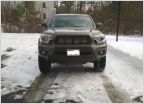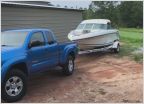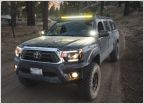-
Welcome to Tacoma World!
You are currently viewing as a guest! To get full-access, you need to register for a FREE account.
As a registered member, you’ll be able to:- Participate in all Tacoma discussion topics
- Communicate privately with other Tacoma owners from around the world
- Post your own photos in our Members Gallery
- Access all special features of the site
Boden Build 2015 DCLB 4x4
Discussion in '2nd Gen. Builds (2005-2015)' started by tacozord, Feb 10, 2015.
Page 4 of 9
Page 4 of 9


 J. Boogies... Kinda slow but super exciting... Build Thread
J. Boogies... Kinda slow but super exciting... Build Thread Demps Build
Demps Build Speedway Blue
Speedway Blue Jacksoverland (Jack0928's) Build and Travel Thread - Picture Heavy
Jacksoverland (Jack0928's) Build and Travel Thread - Picture Heavy Key-Rei's (Science Dog) Build? Thread!
Key-Rei's (Science Dog) Build? Thread!












































